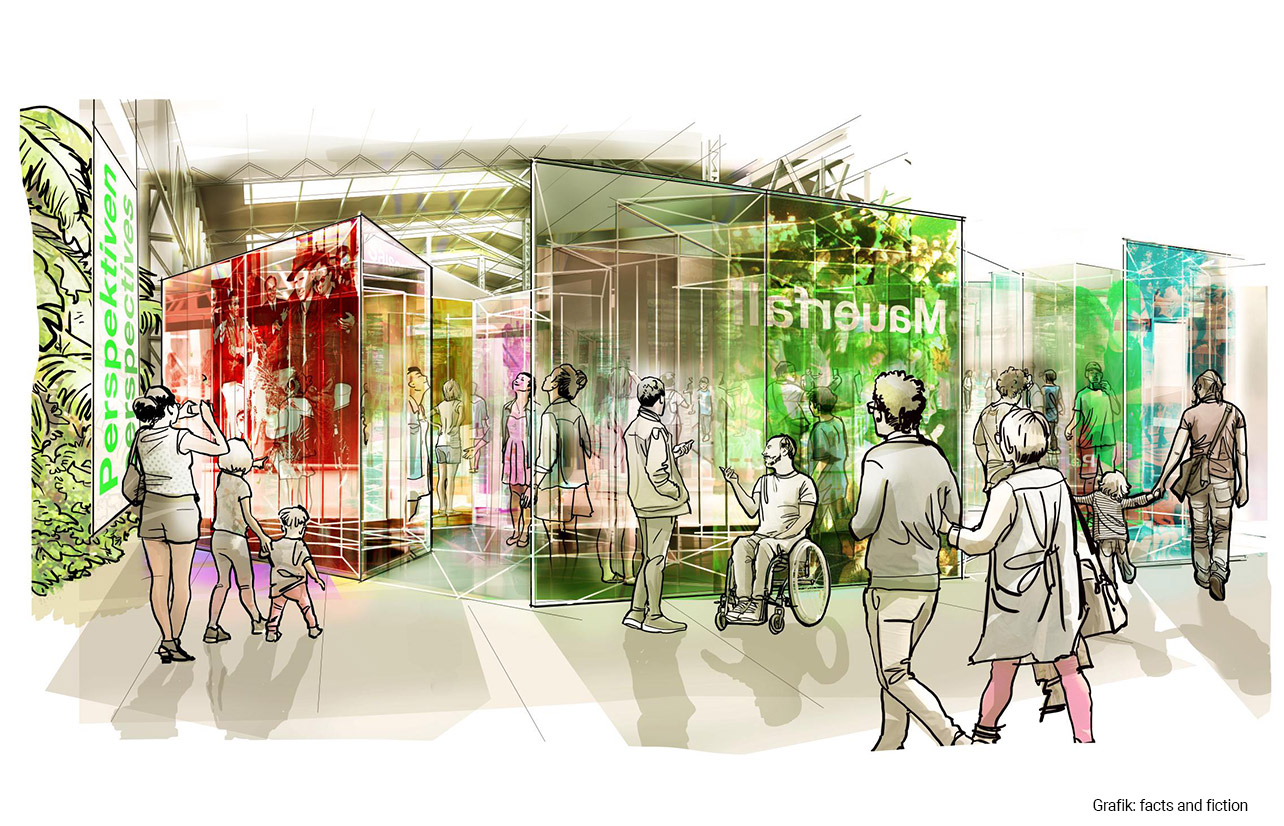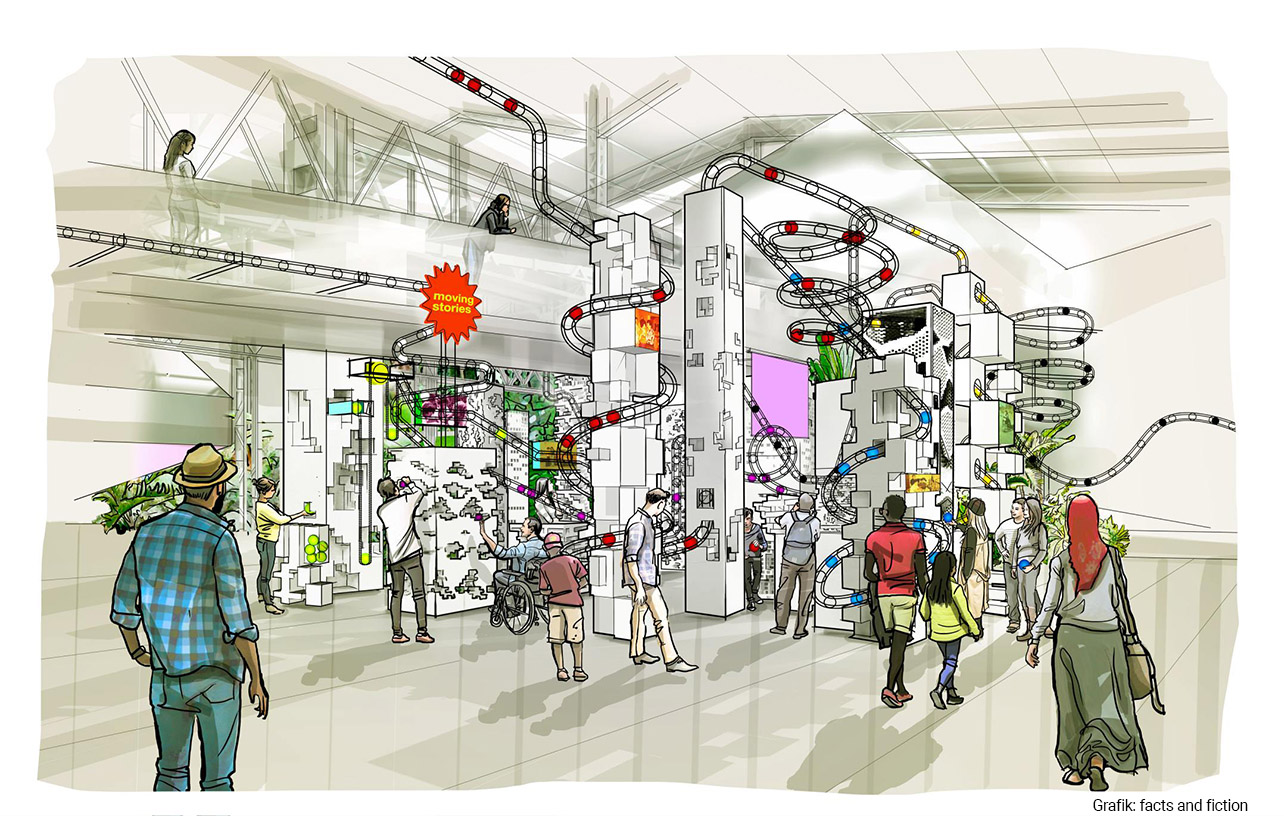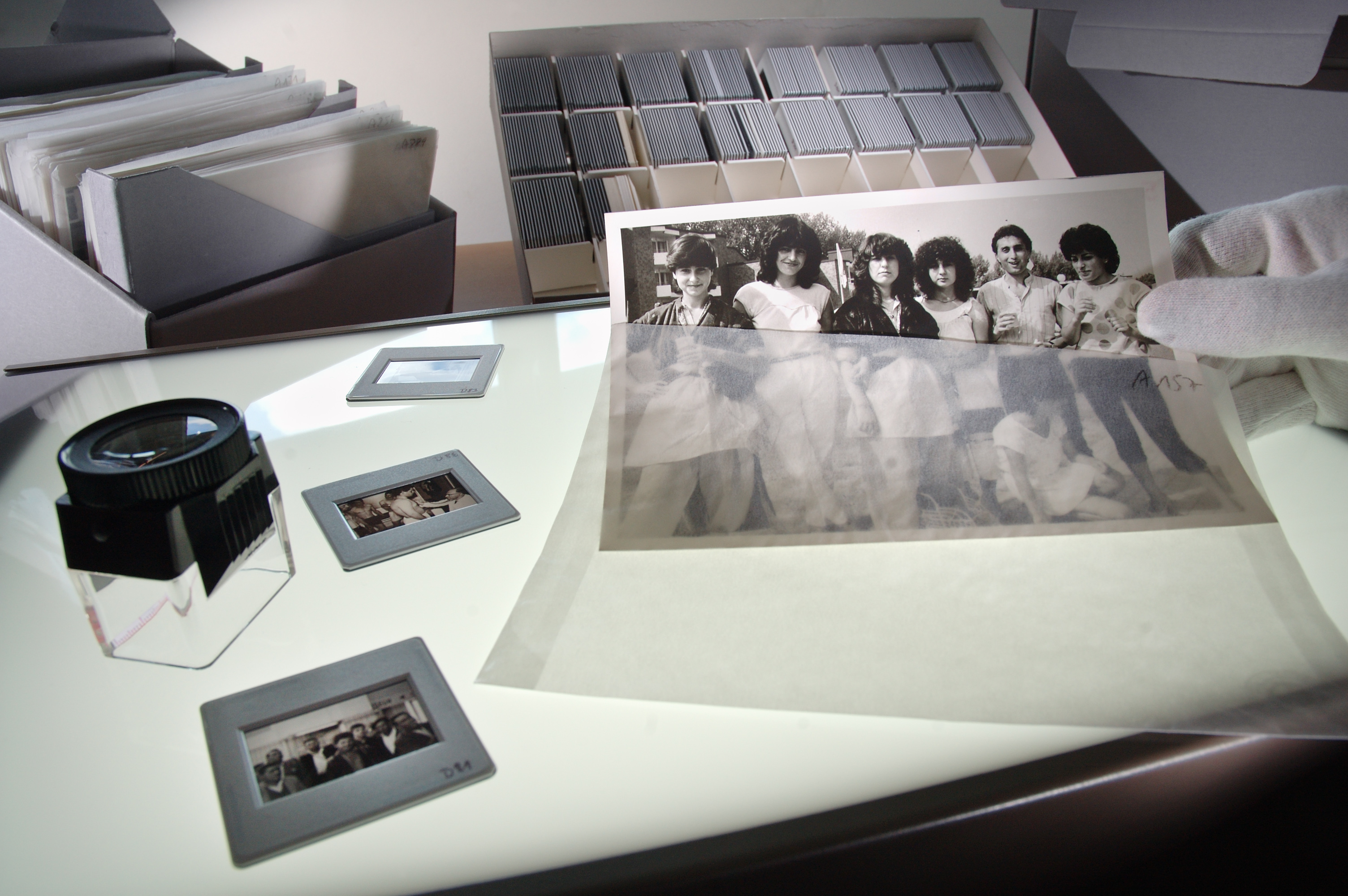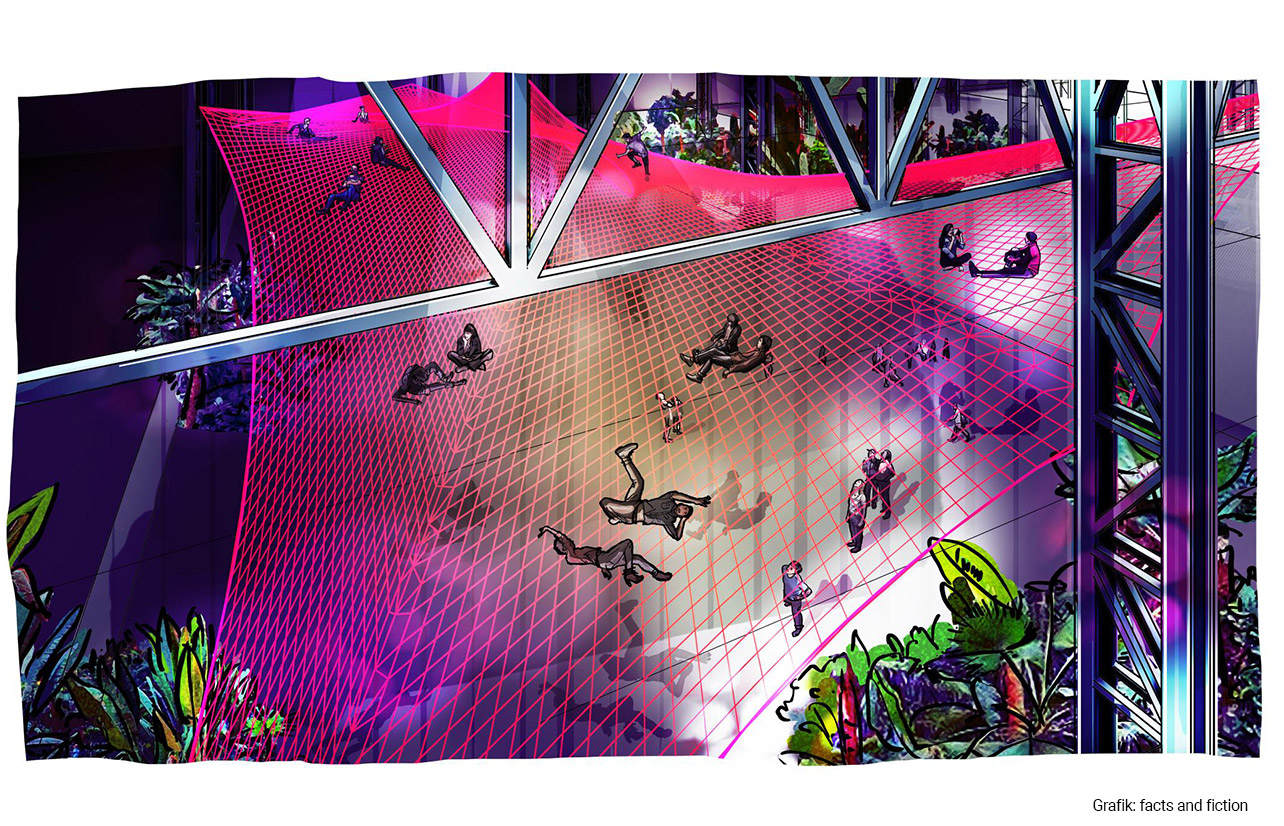
Museum erleben – Räume schaffen
Common Diversity
#unserMuseum is being built in the middle of a community-oriented area with a lively arts and culture scene in the diverse district of Kalk in Cologne. There, Hall 70 with its impressive industrial character is being transformed into a unique place with a high sojourn quality. An area of almost 10.000 square meters offers space for a variety of uses: Exhibition, research, historical education, open spaces as well as rooms for workshops, art, events and gastronomy, a digital lab as well as the DOMiD archive as the centerpiece.
The house will be an open center of dialogue and productive debates about migration and the immigration society. As a focal point of democratic society, it will provide space for its members in various ways to actively participate in discourses and make their stories visible and listen to others.
The place also means a tribute to migrants and their descendants, who have shaped the German immigration society in the past, are currently shaping it and will shape it in the future.
Collection Spaces
Collection – Nationwide Memory of the Migration Society
DOMiD is home to Germany's largest collection of objects and other evidence documenting the diverse history of migration in Germany. The ever-expanding collection grew out of civil society and includes private loans as well as archival records of contemporary history. Currently, the collection contains more than 150,000 exhibits relating to social, cultural and everyday history. They all tell stories, of personal migration as well as of the migration society as a whole. This special collection concept creates a multi-perspective culture of remembrance with space for stories from different angles.
Because only when the stories are heard by everyone can a unifying, overall social narrative emerge. The "House of Immigration Society" offers visitors the opportunity to discover and understand this narrative and to situate themselves within it.

Exhibition Spaces

Exhibition – Modular and Interactive
What can an exhibition on the topic of migration look like with links to people with and without a migration history? This question will be worked out in a participatory process with future visitors. In addition, a Europe-wide architectural competition will deliver new designs. The starting point at this stage: interwoven concept spaces.
At the center of the permanent exhibition are overarching themes that structure today's society and to which everyone has points of reference in everyday life, such as identity, borders, language, nation, mobility, value, perception, change, memory, or foreignness. The abstractness of such concepts makes it possible to raise multi-layered questions within the spaces, to approach the topic of migration society from different directions, and to bring in new perspectives depending on the current situation.
The modular permanent exhibition looks from the present into the past, establishes references to common history(s) since 1945 and provides impulses for future coexistence in the migration society. The exhibition covers the entire territory of the Federal Republic of Germany and all forms of migration, including internal migration (e.g. from the GDR to the FRG).
A dynamic concept of permanent and special exhibitions makes it possible to react directly to social issues and developments. Visitors are not only consumers, but can actively participate in current debates and meet each other.
To implement a modular and interactive exhibition design, the German Federal Cultural Foundation is funding an experimental development phase from 2021 to 2024. In so-called laboratories, the DOMiDLabs, it will be tested how a participation of the diverse urban society could look like. Central questions include: How can the perspectives of contemporary witnesses or "experts of everyday life" be brought in? What kind of spatial design encourages interaction? How can a museum react flexibly to current, even conflictual debates? How can marginalized topics be respectfully exhibited?
Learning Spaces
Learn - Participatory and Diverse
The focus of future learning programs will lie on exchanging ideas and learning from each other. A diverse, participatory offers will provide access to the different needs of a wide range of visitors. Among other things, multilingualism will play a central role.

Documentation Spaces

Archive and Library
As a memory of the immigration society, the archive and library offer a central starting point for academia, the media and those involved in culture. At conferences, panel discussions and specialist lectures, current findings are exchanged on an interdisciplinary basis in the DOMiD museum.
Creative Spaces
Art and Events
#unserMuseum will be a livable urban and lively cultural space: concerts, theater, storytelling café, film evenings or readings offer spaces for encounters. Visual and performing arts offer creative freedom to put complex topics such as migration up for discussion. Whether in a studio or in the open workshop: Art is created in the middle of the museum. The aim is to create an artist-in-residence program that sends transnational and new impulses – into and out of the museum.
